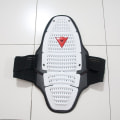When it comes to choosing the right racing suit, there are a few key factors to consider. Not only is it essential for comfort and performance, but it's also a safety factor. The right racing suit and safety accessories won't just keep you protected, they'll help you run with confidence. Race suits can come with 1, 2, or 3 layers, and the fit of your racing suit will depend on the accurate and honest measurement of key points on the body.
We strongly recommend that everyone who wants to order a racing suit take these steps seriously, including knowing how to measure themselves correctly and what measurements they will need. The best thing to do is to use a rope that can be measured after marking it, although we strongly recommend that you buy a “soft” measuring tape, such as the one used by seamstresses. You can find them at fabric and craft stores or online. If a measurement is at the top of a size, it's recommended to move to the next size to ensure you have enough space. Unless you're wearing a custom racing suit, you'll have to accept that some areas of the suit may be slightly oversized. You can also learn all about how to measure your racing suit in this detailed guide.
So perhaps the most important influence when choosing your racing suit is whether or not it meets the requirements of your racing series. Having a racing suit with both certifications is a real advantage if you plan to compete in different sanctioning bodies, where one requires the SFI and the other requires the FIA. The two-piece suit is very popular with oval track runners or those who practice endurance races, as you can open the zipper and take off your jacket while working on the car or waiting to be asked to return to the track for your next race. Like the debate between the one-piece and two-piece racing suit, the debate between the SFI1 and the SFI5 can also include part of the decision-making process when it comes to sanctioning body or track regulations, however, most racers simply like the added value of the TPP and the extraction time compared to the SFI1 single-layer racing suit. These SFI ratings help runners determine the right safety equipment based on race class, speed, and other factors, helping them make the best decision for their racing program.






